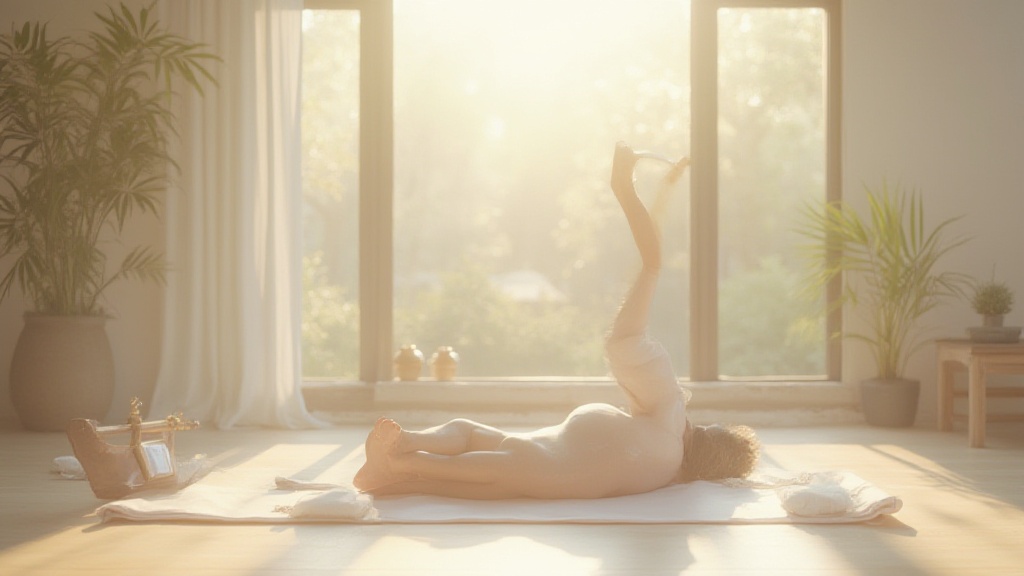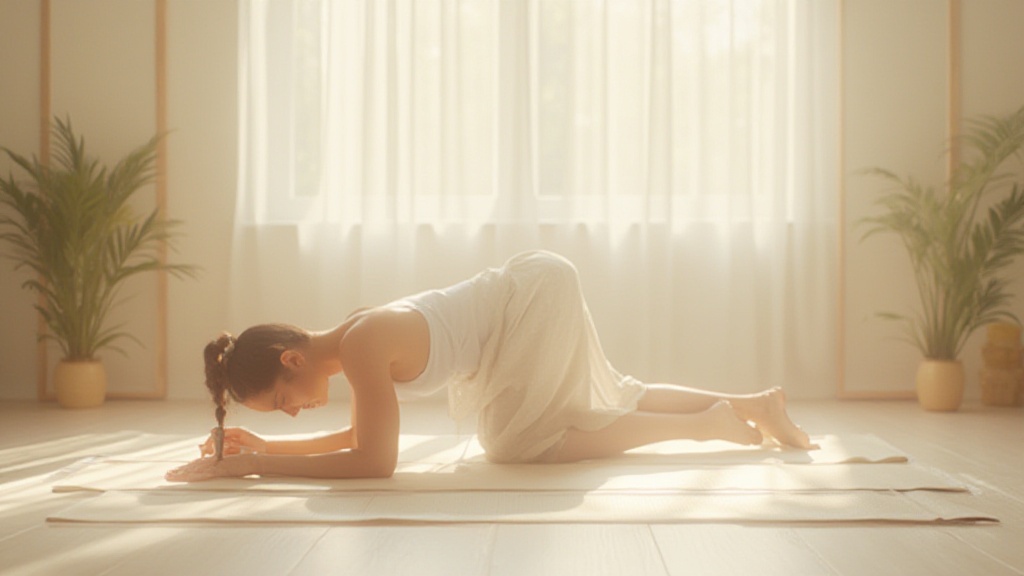
Maintaining flexibility serves as an essential component for seniors aiming to enhance their mobility. Daily stretching routines provide a straightforward yet effective method to achieve improved movement, significantly contributing to overall health.
Regular flexibility exercises assist seniors in preserving physical independence and avoiding age-related stiffness, thereby simplifying daily tasks.
Stretching not only boosts flexibility but also enhances circulation, which is important for joint health.
Seniors who engage in these gentle stretching routines often experience an increased range of motion, facilitating everyday movement.
Integrating these practices into daily life can yield noticeable improvements in both mobility and comfort.
Benefits Of Daily Stretching For Seniors
Enhanced mobility represents one of the key benefits of daily stretching, which plays an important role in injury prevention. Regular stretching exercises improve joint range of motion, which is essential for efficiently performing daily tasks.
Stretching alleviates muscle tension, consequently reducing the risk of injuries during physical activities.
Improved Circulation
Improved circulation emerges as another significant benefit of these mobility routines. Daily stretching promotes better blood flow, crucial for overall well-being.
Incorporating stretching into everyday life can be accomplished easily by setting reminders or associating stretches with common activities, like reading or watching TV.
Integration Tips
- Focus on gentle stretches that target various muscle groups.
- Hold each stretch for 15-30 seconds to maximize flexibility benefits.
- Utilize supportive props, such as chairs or resistance bands, to aid in stretching exercises.
By consistently practicing stretching routines, seniors can enhance their overall mobility and well-being. Each effort reinforces physical independence, making routine tasks easier to manage and promoting an active lifestyle.

How To Incorporate Flexibility Exercises
Flexibility exercises are essential for enhancing senior fitness and promoting overall well-being. Seniors can focus on simple flexibility exercises, such as neck stretches and shoulder rolls, which help maintain mobility.
Consistency in these routines is important; seniors should aim for just 5-10 minutes daily, as this can significantly improve flexibility over time.
Utilizing supportive props, such as a chair, allows for safe engagement in stretches, effectively reducing the risk of falls.
Regular practice not only facilitates muscle tension relief but also promotes fall prevention, ensuring a healthier lifestyle for seniors committed to active aging.
Benefits of Gentle Stretching
Gentle stretching serves multiple purposes within flexibility training. This practice promotes improved posture and enhances the range of motion.
Regular stretching can alleviate agerelated stiffness, making daily activities more manageable. Incorporating stretches into a routine allows seniors to benefit from not just physical wellness but also mental relaxation techniques.
Using Props for Safety
Incorporating supportive props can greatly enhance the safety of stretching routines.
For instance, a chair can provide stability during arm stretches and leg stretches, allowing seniors to perform exercises with confidence.
Resistance bands may be used for gentle resistance, further promoting muscle engagement without straining the joints.
Effective Mobility Routines For Seniors
A well-structured mobility routine is necessary for maintaining joint health and enhancing overall mobility.
Such a routine should begin with warming up through gentle movements, including ankle circles and arm swings, effectively preparing the body for subsequent activities. Including mobility exercises such as leg lifts and toe taps can significantly improve range of motion.
It is important for seniors to focus on gradual progression when increasing the intensity of exercises to avoid strain and injuries.
Weekly Mobility Schedule
A practical example of a weekly mobility schedule may include:.
- Monday: 10 minutes of warm-ups, 20 minutes of mobility exercises, and 5 minutes of cooldown.
- Wednesday: 10 minutes of dynamic stretching, followed by 20 minutes of balance training.
- Friday: 10 minutes of gentle yoga, complemented by 20 minutes of guided stretching.
This structured approach ensures comprehensive engagement in mobility routines, promoting health maintenance and overall wellness.
Flexibility and Mobility for Seniors
- Regular flexibility exercises can improve posture and reduce age-related stiffness.
- Daily stretching for just 5-10 minutes can lead to significant improvements in flexibility over time.
- Using supportive props, such as chairs and resistance bands, enhances safety and confidence during exercises.
- A structured mobility routine can help maintain joint health and improve overall mobility in seniors.
Techniques For Muscle Tension Relief
Effective muscle tension relief can be achieved through various techniques. Deep breathing is a foundational practice that activates the body’s relaxation response, which reduces stress hormones.
This method entails inhaling deeply through the nose for a count of 4, holding for another 4, and exhaling slowly through the mouth for 4 counts.
Implementing progressive muscle relaxation (PMR) further enhances this process; individuals tense each muscle group for 5 seconds before fully relaxing.
Regular practice of these relaxation techniques contributes significantly to overall wellbeing, enhancing both mood and physical function, which are integral components of active aging.
Incorporating gentle stretching practices during breaks throughout the day can also support muscle tension relief. These flexibility exercises improve circulation and promote relaxation, making them an essential part of w wellness activities.
Importance Of Balance Training In Aging
Integrating balance training into fitness routines serves as a powerful method for preventing falls associated with aging.
Research indicates that effective balance exercises significantly enhance stability, thereby promoting physical independence during daily activities. Core strengthening activities, such as standing on one leg or engaging in heel-to-toe walking, are particularly effective for improving balance.
A practical tip involves incorporating these balance training exercises into everyday movements; for instance, one can practice standing on one foot while brushing their teeth.
By prioritizing balance training, individuals can effectively mitigate risks associated with falls, thereby maintaining a higher quality of life and fostering a sense of wellness.
Muscle Tension Relief and Balance Training
- Deep breathing techniques can reduce stress hormones and promote relaxation.
- Progressive muscle relaxation (PMR) has been shown to improve overall wellbeing and mood.
- Incorporating gentle stretching into daily routines enhances circulation and reduces muscle tension.
- Balance training can significantly lower the risk of falls, promoting physical independence in older adults.
Safe Chair Exercises For Enhanced Mobility
Chair exercises serve as an effective method for seniors to enhance strength and flexibility without compromising safety. These mobility routines contribute to improved overall wellness while reducing the risk of injury.
Maintaining proper posture during exercises is essential; ensuring a straight back and aligned neck helps prevent strain.
Various exercises can be incorporated into a routine, including:.
- Seated leg lifts to strengthen thigh muscles
- Arm circles to enhance shoulder mobility
Before starting any new exercise, it is important to consult with a physician to ensure that activities align with individual health needs. Regular engagement in chair exercises can lead to significant improvements in joint health and promote functional independence, thereby supporting physical activity and overall quality of life.
Relaxation Techniques To Reduce Stress
Incorporating relaxation techniques into daily routines can greatly benefit physical health and mobility. Techniques such as meditation and guided imagery are effective at reducing stress levels, which subsequently enhances overall well-being. A simple routine to practice relaxation includes the following:
- Sit comfortably in a quiet space.
- Focus on your deep breathing.
- Visualize a serene landscape to enhance mindfulness.
This practice can be complemented with gentle stretching exercises that promote muscle tension relief and improve flexibility. Managing stress through these relaxation techniques is essential, as it not only fosters mental clarity but also greatly impacts physical performance. Engaging in such practices can lead to a healthier lifestyle for seniors, thereby enhancing their overall quality of life.
Chair Exercises and Relaxation Techniques
- Chair exercises can improve strength by up to 30% in seniors who engage in regular routines.
- Studies show that practicing relaxation techniques can lower stress levels by 40%, improving overall health.
- Regular participation in flexibility exercises can reduce the risk of falls among older adults by 50%.
- Mindfulness practices, including meditation, can enhance cognitive function and reduce anxiety in seniors.
Strategies For Joint Health And Recovery
Maintaining a healthy weight significantly impacts joint function and overall mobility. Excess body weight increases stress on joints, particularly weight-bearing ones such as hips and knees.
Consequently, managing your weight enhances mobility, supports recovery from joint-related issues, and can ultimately improve your quality of life.
Incorporating regular exercise, such as flexibility exercises and low-impact workouts, promotes mobility and aids in the recovery process.
Exercise and Mobility
Engaging in mobility routines is essential for promoting joint health.
Gentle stretching can improve range of motion, while balance training reduces the risk of falls, enhancing physical independence in daily activities. These activities not only facilitate muscle tension relief but also contribute to effective joint health by ensuring that surrounding muscles support joint function appropriately.
Dietary Tips for Joint Health
In addition to exercise, dietary choices play a crucial role in supporting joint recovery.
A diet rich in anti-inflammatory foods, such as fatty fish, nuts, and leafy greens, can help reduce inflammation and alleviate joint pain. Incorporating these foods into your meals regularly can significantly benefit your overall well-being.
Staying hydrated is equally important; it supports joint lubrication, which is essential for maintaining joint health.
Implementing a combination of mindful movement, healthy eating, and structured exercise routines can lead to substantial improvements in joint function and mobility.
Integrating recovery activities such as deep breathing and relaxation techniques can further enhance your wellness journey.
These practices promote not only physical but also mental well-being, allowing for a comprehensive approach to health maintenance.
Joint Health and Recovery
- Maintaining a healthy weight can reduce stress on weight-bearing joints by up to 50%.
- Regular flexibility exercises can improve joint range of motion by approximately 10-20% over time.
- A diet high in anti-inflammatory foods has been shown to decrease joint pain and improve mobility in individuals with arthritis.
- Hydration is essential, as even mild dehydration can lead to joint stiffness and discomfort.
